From performing passage in the dressage arena, to clearing enormous obstacles on cross country, to spinning on a dime after a steer, horses are able to execute incredible feats of strength and agility. Learn how to unlock your horse’s athletic potential by building a lean muscle foundation with Mitavite sponsored dressage rider and instructor Gary Lung.
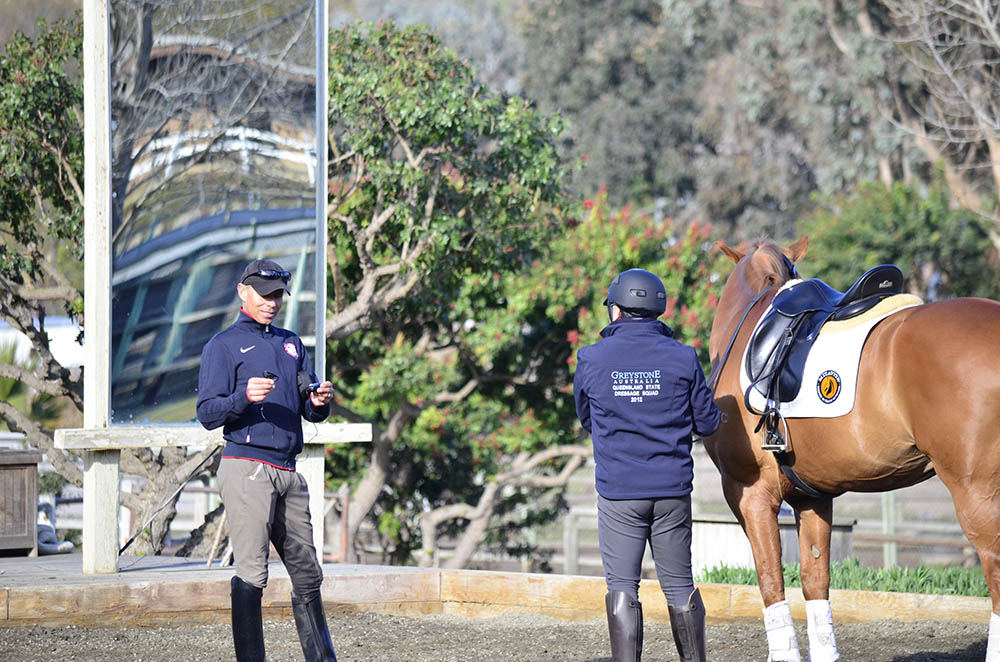
Currently based near Brisbane, Gary Lung has travelled the globe learning from some of the best dressage riders in the industry and discovered what it takes to create the perfect equine athlete.
“Prior to me going to America and working with Steffen Peters, I was very much on the line of thinking that my horse has got to be round – if it’s not fat and round it doesn’t look in condition,” explains Gary. “But I had everything a little bit overweight and fed everything up to the eyeballs. Then I got to Steffen’s and I was absolutely amazed with how every one of their horses were quite athletic and quite lean, to the point where what I saw I was really quite gobsmacked.
“I didn’t even recognise Ravel (Steffen’s 2008 and 2012 Olympic mount) when I first saw him! When he stood there, he was very lean and it wasn’t until they actually worked their horses and really pumped them up that they looked big and muscular. They don’t walk around looking like Arnold Schwarzenegger with big bulky muscles, they’re closer to an athlete who is lean, supple, and strong in a wiry way. In our sport, our horses have to be very athletic and they have to be able to use their body in various ways to perform whatever we want them to do.
“All the horses I saw at Steffen’s were like this. They were on good feed, had copious amounts of pasture and they didn’t feed them lots of prime lucerne. And they work them really well. Any horse that came for training that looked overweight, they would put them on the walker twice a day to trim off the fat. Once they did that, then the horse was in a better condition. If your horse is overweight, it puts unnecessary stress on their joints, their ligaments, their tendons and so on.
“So when I was there with Winchester, they stripped him right back and then he really started developing muscle as opposed to just bulk. He looked like a beautiful hack, going around nice and round.”
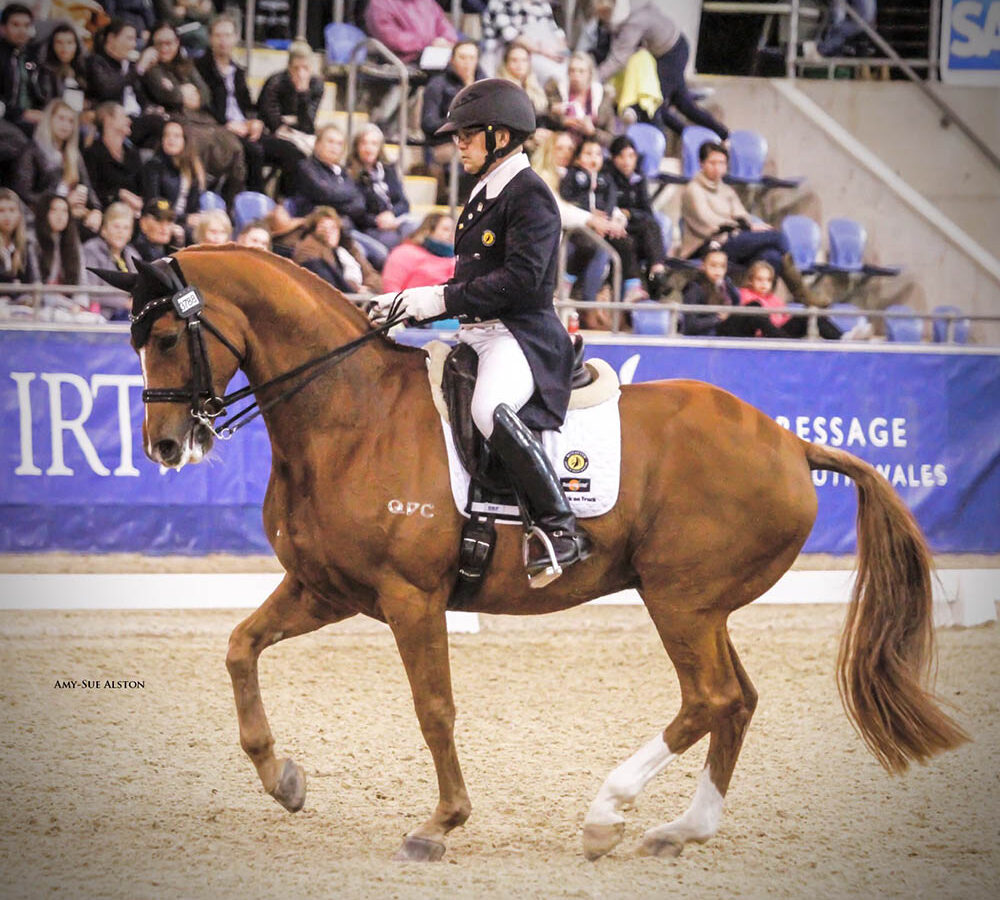
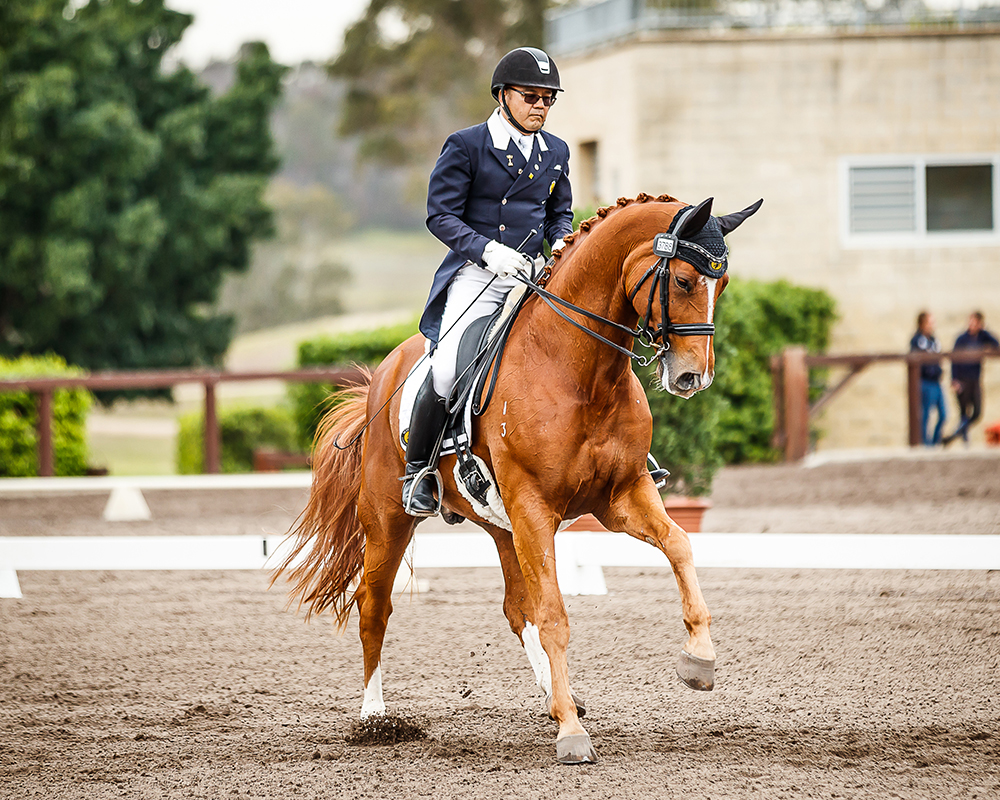
TRAINING FOR LEAN MUSCLE
With new concepts of how elite competition horses should look and a new-found appreciation for the power of lean muscle, Gary returned to Australia with Winchester and has continued implementing the lessons into his program. “I’ve continued that practice with him and every horse that comes here, and I even do it with my students and their horses. And my reasoning to them is, if you are overweight, would you like to run a marathon?
“When you’re training a horse and it doesn’t have to be fancy, even just as simple as the transitions, the horse has to learn to use its body,” explains Gary. “Every horse has body pressure. A lot of horses who are struggling will push out more body pressure because they’re battling to maintain the work that you’re getting them to do. Once they trim up and they start getting a little bit more athletic, then they don’t push as much in the body pressure.
“I’m talking about tension, I’m talking about having a horse that’s ‘sticky’, behind the leg, not going forward. I call that the ‘44-gallon drum symptom’. It’s like the horse’s body is built like a steel 44-gallon drum and it waddles around all stiff and clumsy. And I tell my students ‘we’re going to transform this horse into a blue plastic 44-gallon drum’ so it can suck up its gut, lift up its wither and shoulders, sit on its hind leg tightly, and go forward and upwards… rather than dropping its beer gut into the sand, sticking its chest down, pushing the rib cage out and waddling around like a beached whale. It’s like you’re riding a big, slippery whale that just flops around.”
One of the crucial elements Gary focuses on in his training is ensuring the horse is worked evenly throughout his body and in the direction of travel. “From a planning perspective, I do lots of gymnastic work where they have to learn to use their body. All horses are one-sided – they do better on one side than the other just as humans are right or left-handed. Our job is to train them in a way that they become even on both sides.
“I have a series of different types of gymnastic exercises that concentrate on teaching a horse to not just go forward and pull on the front end but learn how to use their hind leg. It’s all about balancing and self-carriage. Imagine an old-fashioned seesaw with the plank that goes across a little stand. One side is the head and other is the hindquarters. Your job, depending on your horse’s weakest end, is to balance that seesaw and push the back end down or lift the front end up so that it’s equal between the two.
“Once you’ve got the balance and self-carriage sorted, you can start to do exercises within that. And I’m talking lots of lateral work. I’m a real big believer in lots of leg-yielding, and even transitions within the leg-yield. If you are leading down the long side, you could do walk/trot transitions or slow trot/fast trot transitions, where you’re adding your tempo changes within that. Once you do a lot of that you’re balancing between the front end and the back. But you’ve got to watch the tendency of some horses to drop forward on their shoulders, so you need to bring them back on the hind leg.
“Not only will you teach your horse to carry himself, but that’s when you develop that evenness in the muscle. That’s when the hindquarters start to develop, the loins start to develop, and they start to use their back and you’ll get that lovely topline.”
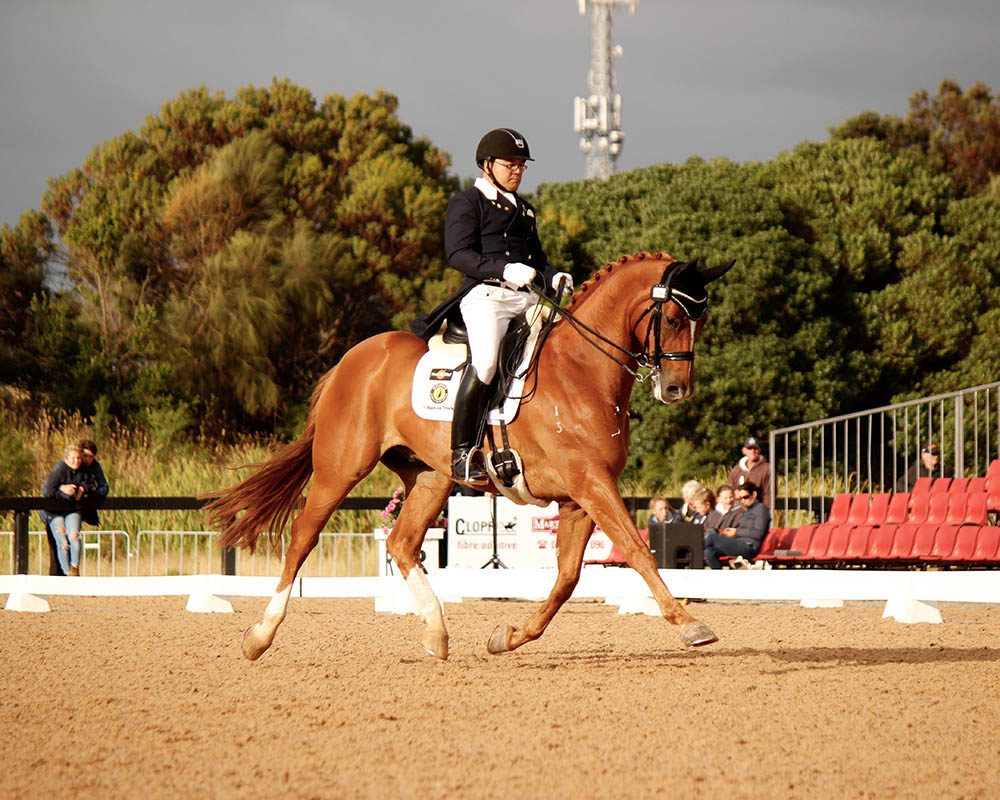
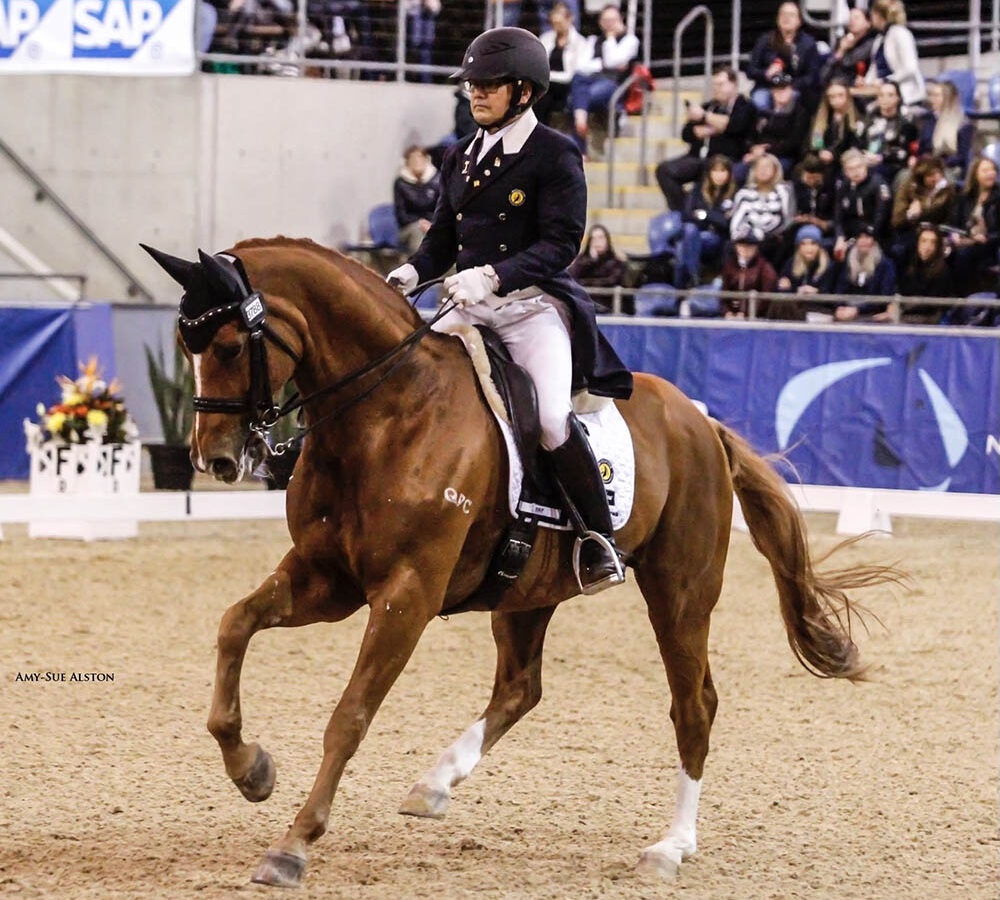
POWERING THE BODY
Completing effective training with your horses can only be achieved by providing their body with the right type and amount of fuel. Equine nutritionist Holly Mills says there are number of steps owners need to take to get their horses on track to having a lean, muscular frame.
“From a nutritional perspective, you need to ensure your horse is meeting their essential amino acid requirements,” explains Holly. “Amino acids are the building blocks of protein, which is what muscle is made up of. High quality sources of protein, such as Mitavite Munga, will contain higher levels of the essential amino acids. Lysine is generally the most common amino acid found on horse feed analysis, followed by methionine. This is because lysine is usually the first limiting amino acid, which basically means it is the first ingredient that ‘runs out’.
“Protein needs to follow a very strict recipe and you cannot substitute amino acids. By ensuring there is sufficient lysine in the diet you are most likely ensuring all other amino acids will be provided in sufficient quantity. It is important to note specific requirements of each essential amino acid, aside from lysine, for the horse are yet to be determined. Then of course it is always important to ensure the horse is meeting all their vitamin and mineral requirements. This will allow all bodily functions, including the ability to build muscle, to occur optimally.”
One of the best feeds currently on the market that promotes the growth and maintenance of lean muscle is Mitavite Munga. Holly says Munga is quite a cool feed, being low in sugar and starch, which makes it a versatile feed for a wide range of horses. “Munga is 25% protein, which is very high! Not only is it high in protein but that protein is also quality protein with 12.8 grams of lysine per kilogram of Munga. Being that high in protein tells you that the majority of the ingredients within Munga are contributing, such as lupins, soybean meal and sunflower seeds, which are all great sources of protein. This protein allows the body to develop muscle and help to repair muscle as well.
“If you are also looking for a little extra topline on your horse you can consider moving your horse over to Munga if the feeding rate is suitable to your horse’s body condition type,” says Holly. “If your horse requires more feed to maintain their optimal condition you can consider using Munga as a ‘topdressing’. Adding 500g-1kg of Munga to the feed you are currently using can really help to boost that horse’s muscle development and really finish them off. Munga’s final benefit is that it is highly palatable! This can be a very important factor for some horses that may need a little enticing to eat their feed. Munga looks and smells absolutely beautiful, and horses love it. From my point of view, there is nothing not to love about Munga!”
Gary Lung feeds Mitavite Munga to all the horses in his stable. “Within about three or four weeks of switching my horses over to Munga, suddenly muscle started growing and they started filling out in new areas, and I thought, ‘Wow, this is awesome!’ I’ve put a lot of my horses on Munga. Sometimes they get a little bit energetic, but that’s just them getting used to the actual feed, then they click into it and then they just get this ‘Munga shape’. They just look so muscular in such an athletic way.” EQ
This article was written in conjunction with Mitavite.
YOU MIGHT ALSO LIKE TO READ:
In a Bind: The Role of Toxin Binders – Equestrian Life, October, 2021
Hold Your Horses: Feeding for Coolness – Equestrian Life, September, 2021
The Importance of Vitamin K – Equestrian Life, August, 2021

